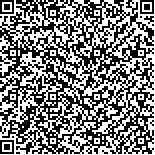| 摘要: |
| 海洋沉积物中的植物信息具有重要的生态学和古环境意义, 但传统方法只能通过研究沉积物中的孢粉获取植物信息。随着分子生物学的进步, 探索利用海洋沉积物中的植物分子多样性解释全球变化成为了一种新的尝试。文章首次尝试了对海洋沉积物中的植物DNA进行提取与PCR扩增, 通过使用不同的DNA提取方法(DNA提取试剂盒)和PCR扩增条件[2倍浓缩的PCR扩增预混合溶液(Mix)退火温度、循环数、DNA模板量以及引物], 探索海洋沉积物中植物DNA提取和PCR扩增的方法, 并在采自黄海潮间带以及浅海表层的沉积物中进行了检验。共尝试了32种方法, 结果表明:强力土壤微生物DNA提取试剂盒(DNeasy PowerSoil)以及2×TransTaq HiFi PCR SuperMix Ⅰ是较好的DNA提取与扩增条件; 对于潮间带表层沉积物样品, 最佳退火温度为55℃, 最佳循环数为55个循环; 而对于浅海表层沉积物样品, 最佳退火温度为59℃, 最佳循环数为45个循环; 此外, 相对于rbcL引物, gh引物的扩增结果更好。这项研究首次成功提取并扩增了海洋沉积物中的植物DNA, 以期应用于海洋沉积物中植物分子多样性的分析,为研究全球环境变化和陆地植被变化提供一种新的技术途径。 |
| 关键词: 分子生物学 海洋沉积物 植物DNA 方法学 |
| DOI:10.11693/hyhz20220900229 |
| 分类号: |
| 基金项目:国家自然科学基金资助项目,U1906211号;国家自然科学基金资助项目,41976058号;青岛海洋科学与技术试点国家实验室,2021WHZZB0804号;山东省泰山学者工程专项经费资助支持,TS20190963号 |
|
| Methodological exploration of plant DNA extraction and PCR amplification from intertidal and shallow sea sediments of the Yellow Sea |
|
CHEN Jia-Xin1,2, LIU Jia-Wen1,2, FA Wen-Long1,2, LI Hao-Tian1,2, LEI Yan-Li1,3,2
|
|
1.Laboratory of Marine Organism Taxonomy and Phylogeny, Qingdao Key Laboratory of Marine Biodiversity and Conservation, Institute of Oceanology, Chinese Academy of Sciences, Qingdao 266071, China;2.University of Chinese Academy of Sciences, Beijing 100049, China;3.Southern Marine Science and Engineering Guangdong Laboratory(Zhuhai), Zhuhai 519082, China
|
| Abstract: |
| Information of plant in marine sediments has important ecological and paleoenvironmental significance. However, traditional methods can only obtain plant information by studying sporopollen in sediment. With the progress of molecular biology, exploring the use of plant molecular diversity in marine sediment has become a new attempt to explain global changes. This study is the first attempt to extract and PCR-amplify plant DNA from marine sediment by using different DNA extraction methods (DNA extraction kits) and PCR amplification conditions (Mix, annealing temperature, number of cycles, DNA template Quantities and primer pairs), with which plant DNA extraction and PCR amplification in marine sediments were explored and tested for intertidal and shallow sea surface sediments. A total of 32 methods collected from the Yellow Sea were tested, and the results show that the DNeasy PowerSoil Soil Microbial DNA Extraction Kit and 2×TransTaq HiFi PCR SuperMix I were better for DNA extraction and amplification. For the intertidal surface sediment samples, the optimal annealing temperature was 55℃, and the optimal number of cycling was 55 cycles; for the shallow sea surface sediment samples, it was 59℃ and 45, respectively. In addition, the amplification results of the gh primer were better than that of the rbcL primer. In this study, plant DNAs in marine sediments were successfully extracted and amplified for the first time, which provide a new technical approach for the analysis of plant molecular diversity in marine sediments and global environmental changes and terrestrial vegetation changes. |
| Key words: molecular biology marine sediments plant DNA methodology |
